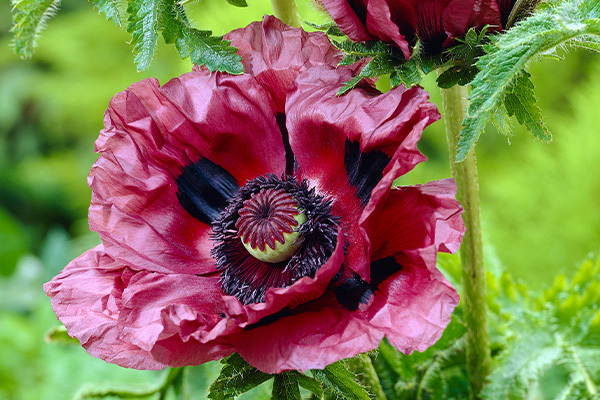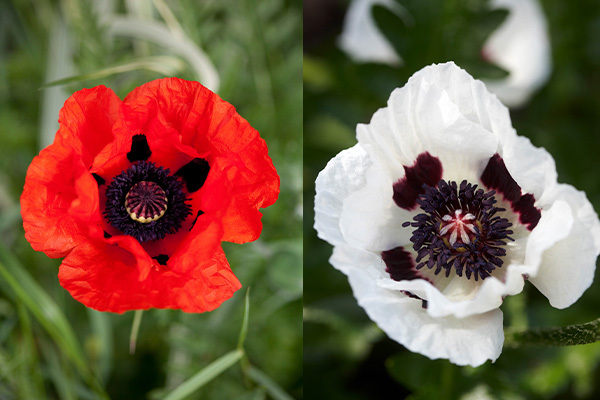
What We've Included
When to Plant | Where to Plant | How to Plant | When to Water | Deadheading | Propagating | Common Issues & How to Solve Them | When will they Flower?
When to Plant
Bare root Poppies are best planted from in the autumn and spring seasons. This gives them plenty of time to establish before they flower in summer. Poppy seeds can be sown in the spring for summer flowers, or in the autumn for flowers the following year.

Where to Plant
Poppies will thrive in most soil but prefer well-drained and somewhere sunny. Large perennial varieties are perfect for a border. Annual types are perfect for sowing in a patch of soil, especially if you’re after a wildflower display.
Himalayan varieties prefer partial shade and damp soil. Avoid planting poppies in containers if you can, as they will perform much better in a garden. However, if you do wish to grow them in a container, ensure they are well watered and never go dry.
How to Plant
Planting Poppies in Pots
- Dig a hole in the border that’s big enough to house the root ball.
- Fill around the modules with soil and firm them down gently.
- Water well and you’re done!
Planting Loose-rooted Poppies
- Soak roots in a bucket of water for 1-2 hours before planting.
- Dig a hole in the border that’s big enough to house the root system. If planting in pots, fill a large pot halfway with potting soil and then pop the roots in with the crown pointing upwards and the root system pointing to the floor.
- Plant in groups for a fuller display, usually in groups of 3, somewhere that gets plenty of sunlight.
- Ensure the crown is just below the soil unless the plant has some leaves, in which case leave them exposed with the rest of the root system under the soil.
- Water well once planted.
Planting Poppy Seeds
- Sow seeds thinly over well-prepared soil outside.
- Ensure soil is well-draining
- They need a bit of winter cold to break their dormancy, so sow them from early spring.
- The seeds will soon germinate in early spring, as the soil starts to warm up.
When to Water
After planting, Poppies should be regularly watered, especially once their buds appear. Poppies grown in containers should be watered regularly, especially in hot weather as they will dry out rather quickly.

Deadheading
You won’t need to deadhead annual poppies. Oriental varieties can be deadheaded for a second flush of flowers, as well as Himalayan poppies. You can cut back perennial varieties down to ground level in autumn after they’ve finished flowering. Cover them with mulch or leaf mould/bark chips to keep them warm over winter.
Propagating
Poppy seeds can be propagated with ease. Leave annual varieties to self-seed after they’ve flowered before pulling them up in autumn. You can also propagate oriental varieties by taking root cuttings in autumn or winter. To do this, simply lift the plant and cut off a part of the root that has a pencil width.
Push them into compost with the thickest end at the top and cover this with a layer of grit. Water it in well, leave it in a cold frame, and wait for the plants to appear before potting them up later in the season.
Common Issues & How to Solve Them
Poppies aren’t often afflicted by pests or diseases. Your biggest issue is oriental types contracting powdery mildew. This affects the whole plant, leaving them with a white substance in spring or summer. Plant them slightly further apart than you may think to avoid this as they just need airflow.

When will Poppies Flower?
Poppies often appear from May to August, depending on the variety. We always recommend checking the product before planting to know the exact flowering times, as they may differ from type to type.
